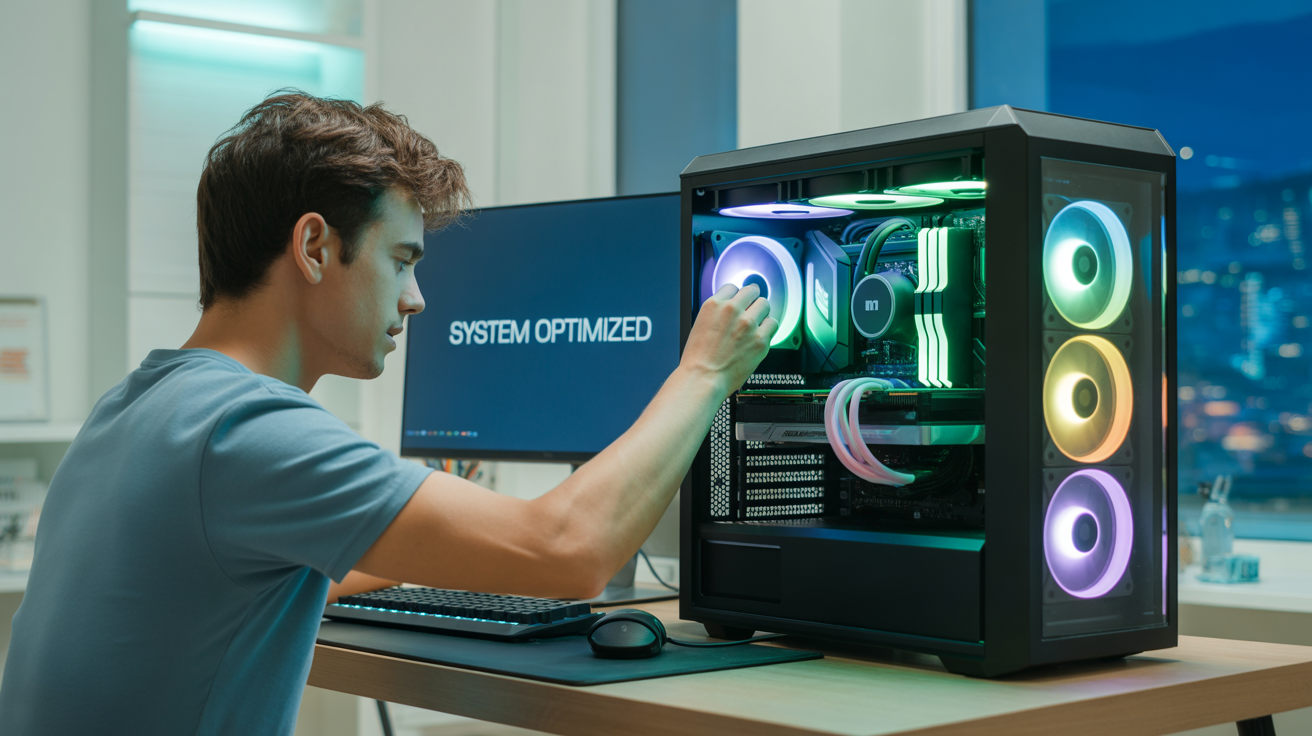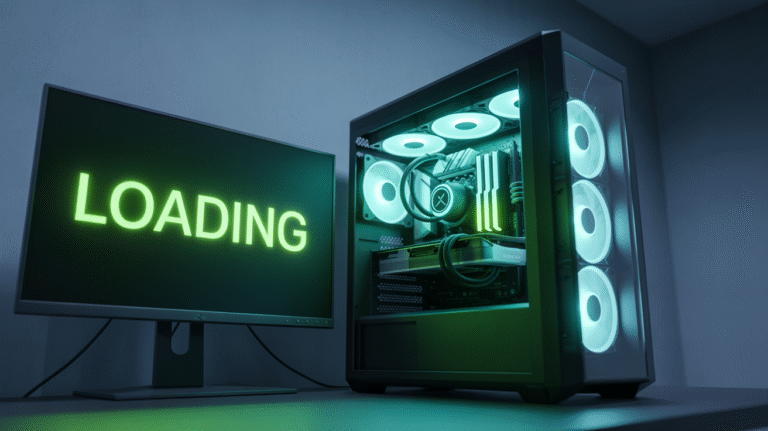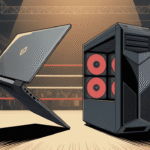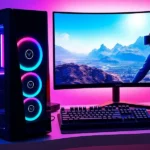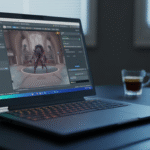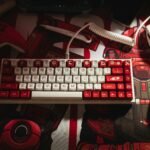Achieving peak gaming performance on your desktop PC isn’t solely about installing the latest and most powerful hardware. It also involves meticulously optimizing your system and software to ensure every component operates efficiently and harmoniously. A properly tuned PC delivers not just higher frame rates, but also greater stability, reduced input lag, and a more visually consistent experience, allowing you to fully immerse yourself in your favorite virtual worlds or gain a competitive edge. This extensive guide covers the essential steps, from foundational checks to advanced tweaks, to help you maximize your gaming potential.
Why Optimize Your PC for Gaming?
In the demanding world of PC gaming, performance is king. Low frame rates can lead to choppy visuals, making fast-paced action frustrating and hindering your reaction times. Input lag, even measured in milliseconds, can be the difference between victory and defeat. Beyond simply making games playable, optimization enhances the overall quality of your experience.
By optimizing your PC, you ensure that your valuable hardware resources, your CPU, GPU, RAM, and storage are primarily focused on running the game itself. This minimizes wasted processing power on unnecessary background tasks and ensures efficient data flow. The result is smoother gameplay, faster loading times, more stable frame delivery, and the ability to run games at higher graphical settings while maintaining a fluid experience. It’s about getting the maximum return on your hardware investment.
Know Your Rig: Understanding Your Current Hardware

The first step in any optimization process is a thorough understanding of your system’s specifications. This knowledge is crucial for identifying potential bottlenecks, verifying compatibility with game requirements, and applying targeted optimizations. Knowing your hardware prevents guesswork and allows for more effective tweaking.
While Windows provides basic system information, using system information tools offers more detail. Press Windows Key + R, type msinfo32, and press Enter for a comprehensive overview. For detailed component specs, especially for GPU and RAM, free tools like CPU-Z and GPU-Z are highly recommended. These utilities provide granular information about clock speeds, temperatures, memory timings, and more.
- CPU (Central Processing Unit): The processor executes game logic, manages AI, physics, and sends draw calls to the GPU. Its speed and core count matter, especially in simulation-heavy or open-world games. Find yours by right-clicking Start > System.
- GPU (Graphics Processing Unit): The graphics card is responsible for rendering every frame you see. Its processing power (core count, clock speed) and video memory (VRAM) are the biggest determinants of gaming performance and what graphics settings you can use. Check in Task Manager (Ctrl+Shift+Esc) > Performance > GPU.
- RAM (Random Access Memory): RAM stores temporary data the CPU and GPU need to access quickly, including game assets, textures, and operating system data. The amount (e.g., 16GB, 32GB) dictates how much data can be held readily available, preventing the system from having to constantly fetch from slower storage. The speed (MHz) and timings (CL) affect how quickly the CPU can access data from RAM. View in Task Manager > Performance > Memory.
- Storage (HDD/SSD): Where your operating system, games, and files are permanently stored. The speed of your primary drive dramatically affects system boot time, application launch speed, and crucial game loading times, as well as asset streaming during gameplay. Identify drives in Task Manager > Performance > Disk.
Understanding these components helps set realistic expectations for performance and guides your optimization efforts. Click here to view the best gaming desktops
Baseline Performance: Benchmarking Your System
To accurately measure the impact of your optimization efforts, you must first establish a baseline performance level. Benchmarking provides objective data on how your system performs before and after making changes. This allows you to quantify gains and identify whether a particular tweak was beneficial or detrimental.
- In-Game Benchmarks: Many modern games include built-in benchmarking tools that run a standardized sequence and report average, minimum, and maximum FPS. These are invaluable for seeing how specific game settings affect performance on your hardware.
- Synthetic Benchmarks: Programs like 3DMark (Time Spy, Fire Strike), Unigine Superposition, or Cinebench (for CPU) stress your components with demanding, repeatable workloads. They provide scores that can be compared online to similar systems, helping gauge if your performance is typical for your hardware configuration.
- Performance Monitoring Software: Tools such as MSI Afterburner (with RivaTuner Statistics Server – RTSS), HWiNFO64, or the overlays provided by Nvidia GeForce Experience and AMD Software Adrenalin allow you to monitor FPS, GPU/CPU temperature, usage percentage, clock speeds, and RAM/VRAM usage in real-time while you game.
Before you change anything, run several benchmarks and play your most demanding game for a good session (15-30 mins). Note the average FPS, minimum FPS (critical for identifying stutters), and component temperatures. Record this data carefully; it’s your starting point for measuring success.
Driver Power: The Crucial Role of Up-to-Date Drivers
Drivers are the essential software layer that allows your operating system to communicate effectively with your hardware components. Keeping these drivers, especially for your graphics card, up-to-date is arguably the single most impactful optimization step for gaming performance and stability. Manufacturers constantly release new driver versions with performance enhancements and bug fixes.
GPU Drivers: The Gaming Engine’s Fuel

Graphics drivers (from Nvidia or AMD) are specifically optimized for new game releases. They often contain performance tweaks, profiles, and fixes that can yield significant FPS increases or resolve visual glitches and crashes in specific titles. Installing the latest driver is non-negotiable for optimal gaming.
- Nvidia: Download Nvidia GeForce Experience. It automatically detects your GeForce GPU and offers one-click updates for the latest “Game Ready” drivers. When installing, choosing “Custom” installation and checking the “Perform a clean installation” box is often recommended to remove any potentially conflicting files from previous driver versions.
- AMD: Download AMD Software Adrenalin Edition. This suite provides similar functionality for AMD Radeon GPUs, allowing you to easily check for and install new driver versions (often labeled “Recommended” or “Optional”). A “Factory Reset” option during installation acts like a clean install for AMD drivers.
Check for driver updates regularly – ideally before playing a new major title or every few weeks. Click here to view the best GPU Drivers for your desktop.
Essential System Drivers (Chipset, Audio, Network)
While less frequently updated than GPU drivers, keeping other system drivers current is vital for overall system stability, compatibility, and efficient operation.
- Chipset Drivers: These are critical as they manage the interaction between your CPU and the motherboard’s various controllers (USB, SATA, PCIe lanes, etc.). Outdated chipset drivers can lead to sub-optimal performance or compatibility issues with devices. Obtain these from your motherboard manufacturer’s support website or directly from Intel/AMD based on your chipset model.
- Audio Drivers: Ensure compatibility and stability for your sound hardware. While not directly boosting FPS, problematic audio drivers can sometimes cause system conflicts or stutters. Get updates from your motherboard manufacturer (for integrated audio like Realtek) or dedicated sound card manufacturer.
- Network Drivers (LAN/Wi-Fi): Crucial for a stable online gaming connection. Ensure your Ethernet and/or Wi-Fi adapter drivers are current to avoid dropped connections, high ping, or bandwidth issues. Download these from your motherboard manufacturer or the specific network adapter’s manufacturer.
Windows Update will sometimes provide driver updates, but for the latest, specifically optimized versions, especially for chipset and network, it’s best to go directly to the manufacturer’s website. Your motherboard’s support page will list all relevant drivers for your model.
Windows Optimization: Tuning Your Operating System for Speed

The Windows operating system, while robust, runs many services and features that consume system resources. Adjusting certain Windows settings can free up CPU cycles, RAM, and disk bandwidth, allowing your games to run more smoothly.
Harnessing Windows Game Mode
Windows Game Mode is a built-in feature designed to prioritize your game when it’s running. It works by detecting when you’re playing a game and then:
- Prioritizing your game’s process over most background applications.
- Preventing Windows Update from performing automatic actions like driver installations or sending restart notifications during gameplay.
- Attempting to achieve a more stable frame rate.
To ensure Game Mode is active, open Settings (Windows Key + I), go to Gaming, and select Game Mode. Make sure the toggle is switched On. This is a simple step with no downsides and is generally recommended.
Selecting the High-Performance Power Plan
Power plans control how Windows manages your system’s power delivery. The Balanced plan attempts to save energy by potentially lowering clock speeds or putting components into lower power states when not under heavy load. This can lead to performance fluctuations or throttling during gaming.
For consistent maximum performance, switch to the High Performance power plan. Search for “power plan” in the Windows search bar and select Choose a power plan or Edit power plan. Select High Performance. If you don’t see it, click “Show additional plans.” For an even more aggressive plan (potentially more power consumption but ensures components stay at maximum frequency), the Ultimate Performance plan can be enabled on Windows Pro for Workstations or via a specific command in Command Prompt (search online for “enable ultimate performance windows command”).
Taming Background Applications & Startup Bloat
Many applications are configured to launch automatically when you log into Windows and continue running in the background, consuming valuable resources even when you’re not actively using them. Examples include chat apps, cloud storage sync clients (OneDrive, Dropbox, etc.), update checkers, and various utility programs.
Open Task Manager (Ctrl+Shift+Esc) and go to the Startup tab (or Startup Apps in Windows 11). This lists programs configured to run at startup and shows their impact. Review this list and disable anything you don’t need running the moment you boot your PC. Right-click the item and select Disable. Be cautious not to disable essential system processes or your antivirus software.
You can also control which Windows Store apps can run in the background. In Settings (Windows Key + I), navigate to Privacy (older Windows 10) or Apps > Apps & features > select app > Advanced options > Background app permissions (Windows 11/newer Win 10). Turn off background activity for apps you don’t need constantly updating or running.
Fine-Tuning Visual Effects for Performance
Windows employs various graphical bells and whistles like smooth scrolling, animations, shadows, and transparency (Aero effects) for a more polished look. While modern hardware handles these easily, disabling some can free up minimal GPU resources and potentially make the UI feel snappier.
Search for “performance” in the Windows search bar and select Adjust the appearance and performance of Windows. In the Visual Effects tab, you can select Adjust for best performance to disable all visual effects for maximum efficiency, or choose Custom to selectively disable effects. Recommended effects to consider disabling for performance include “Animate windows when minimizing and maximizing,” “Show shadows under windows,” and “Smooth edges of screen fonts” (though this one impacts text clarity).
Disabling Unnecessary Notifications & Focus Assist
Pop-up notifications from apps or system events can be distracting and, in some cases, may momentarily pull focus or cause micro-stutters during gameplay.
In Settings (Windows Key + I), go to System > Notifications. Configure which applications are allowed to send notifications or toggle off “Get notifications from apps and other senders” entirely while gaming. The Focus Assist feature (also under System settings) allows you to set rules to automatically suppress notifications at certain times or when using full-screen apps. Configure it to automatically turn on when you’re duplicating your display or playing a game in full-screen mode to ensure uninterrupted gameplay.
In-Game Settings: Finding the Sweet Spot Between Fidelity and Frames

The most significant performance gains often come from intelligently adjusting the graphics settings within the game itself. Every setting represents a trade-off between visual quality and performance. The goal is to find the right balance for your hardware and preferences.
Resolution, Refresh Rates, and Your Monitor’s Native Capabilities
- Resolution: This is the number of pixels rendered horizontally and vertically (e.g., 1920×1080, 2560×1440, 3840×2160). Resolution has the most drastic impact on GPU load. Rendering at 4K requires rendering four times as many pixels as 1080p. Always use your monitor’s native resolution in-game for the sharpest image. If you must lower resolution for performance, consider using a resolution scale setting instead if available, which renders the game internally at a lower resolution but outputs to your native display resolution, often resulting in a better-looking image than simply selecting a lower resolution mode.
- Refresh Rate (Hz): How many times per second your monitor updates the image. A 144Hz monitor can display up to 144 distinct frames per second. In-game, ensure your display mode is set to the correct resolution and the highest available refresh rate that matches your monitor’s capability. This ensures you see as many frames as your GPU can produce, up to the monitor’s limit, for smoother motion. Also, verify Windows Display settings are set to the correct refresh rate (Settings > System > Display > Advanced display settings).
Demystifying Common Graphics Settings
Understanding what each setting does helps you decide what to sacrifice for performance:
- Texture Quality: Determines the detail of surface textures. Higher requires more VRAM.
- Impact: High VRAM, Low-Medium FPS.
- Shadow Quality: Renders realistic shadows. Computationally expensive, especially soft, high-resolution shadows.
- Impact: High-Very High FPS. Often the first setting to lower.
- Anti-Aliasing (AA): Smooths jagged edges on objects. Different techniques (MSAA, FXAA, SMAA, TAA) have varying performance costs and visual results. TAA is common now, offering a good balance but can cause slight blur.
- Impact: Medium-Very High FPS depending on the technique.
- Ambient Occlusion (AO): Adds realistic depth by simulating how light is blocked in crevices and where objects meet. Can be demanding.
- Impact: Medium-High FPS.
- Global Illumination (GI): Simulates how light bounces off surfaces. Can be very realistic but computationally intensive. Often tied into Ray Tracing or advanced lighting models.
- Impact: High-Very High FPS.
- Volumetric Effects (Fog, Clouds, Smoke): Renders realistic atmospheric density. Can be demanding, especially in complex scenes.
- Impact: Medium-High FPS.
- Post-Processing: Effects applied after the main rendering (e.g., Motion Blur, Depth of Field, Bloom, Color Correction). Performance impact varies but is usually Low-Medium. Motion blur is often disabled for competitive play as it obscures detail during movement.
- Tessellation: Adds geometric detail to models and environments. Can add realism but impacts GPU geometry processing.
- Impact: Low-Medium FPS.
- Anisotropic Filtering (AF): Improves texture clarity on surfaces viewed at oblique angles. Very low performance cost on modern GPUs. Usually set to 8x or 16x.
- Impact: Very Low FPS.
- Ray Tracing: A cutting-edge rendering technique for highly realistic lighting, reflections, and shadows by simulating light rays. Extremely demanding, often requiring dedicated hardware cores (RT cores on Nvidia RTX, Ray Accelerators on AMD RX).
- Impact: Very High to Extreme FPS. Use with caution unless you have a high-end GPU, often paired with DLSS/FSR.
Upscaling Technologies (DLSS, FSR, XeSS): These are game-changing performance boosters. They render the game at a lower resolution (e.g., 1080p) and use AI (DLSS, XeSS) or spatial algorithms (FSR) to intelligently reconstruct the image to your monitor’s native resolution (e.g., 4K). This provides performance often approaching the lower render resolution while maintaining visual quality far superior to simply running the game at the lower resolution. They are highly recommended if available in the game and supported by your GPU (DLSS: Nvidia RTX; FSR: AMD Radeon, Nvidia GeForce, Intel Arc; XeSS: Intel Arc, Nvidia GeForce, AMD Radeon).
Optimization Hierarchy: Start with presets. If needed, lower settings typically in this order for largest gains: Ray Tracing -> Shadows -> Anti-Aliasing -> Ambient Occlusion -> Volumetric Effects -> Global Illumination. Then fine-tune smaller effects. Always monitor FPS and visual quality to find your ideal balance.
V-Sync, G-Sync, and FreeSync: Tearing vs. Input Lag
Screen synchronization technologies manage when your GPU sends frames to the monitor to prevent visual artifacts.
- Screen Tearing: Occurs when the GPU sends a new frame while the monitor is still displaying the previous one, resulting in a horizontal “tear” line.
- V-Sync (Vertical Sync): Forces the GPU to wait until the monitor finishes its current refresh cycle before sending a new frame. This eliminates tearing but, if the GPU can’t produce frames fast enough, it can cause stuttering (waiting for the next refresh cycle) and significantly increase input lag (the delay between your action and it appearing on screen).
- Nvidia G-Sync / AMD FreeSync (Adaptive Sync): These are Variable Refresh Rate (VRR) technologies. With compatible hardware (G-Sync monitor + Nvidia GPU, or FreeSync monitor + AMD GPU, and increasingly FreeSync with Nvidia GPUs), the monitor dynamically adjusts its refresh rate to match the GPU’s frame output in real-time. This eliminates tearing and reduces stuttering across a wide FPS range with minimal input lag.
Recommendation: If you have a G-Sync or FreeSync setup, enable it in your GPU control panel and leave V-Sync disabled in-game (or set to “Fast” or “Enhanced Sync” in GPU drivers, or enabled in-game alongside VRR depending on specific implementation – research best practices for your GPU/monitor combo). If you don’t have VRR, V-Sync can eliminate tearing but introduces input lag. Many competitive players disable V-Sync and tolerate tearing for the lowest possible input lag. As an alternative to V-Sync, consider using a Frame Rate Limiter (like RTSS or in-game options) to cap your FPS just below your monitor’s maximum refresh rate (e.g., 141 FPS on a 144Hz monitor). This can minimize tearing and improve frame pacing without the significant input lag of traditional V-Sync.
Storage Solutions: The Impact of Drive Speed

The speed of your storage device directly affects how quickly games load and how smoothly assets can be streamed into memory during gameplay. An upgrade from an HDD to an SSD is one of the most noticeable quality-of-life improvements you can make.
HDD vs. SSD for Gaming: Load Times and Responsiveness
| Drive Type | Interface | Typical Read Speeds (MB/s) | Typical Write Speeds (MB/s) | Game Loading Times | OS & App Responsiveness | Cost/GB |
|---|---|---|---|---|---|---|
| HDD | SATA (mostly) | 80-160 | 80-160 | Very Slow | Slow | Lowest |
| SATA SSD | SATA | ~550 | ~500 | Much Faster | Very Fast | Medium |
| NVMe SSD (Gen3) | PCIe 3.0 x4 | ~3500 | ~3000 | Fastest | Very Fast | Higher |
| NVMe SSD (Gen4) | PCIe 4.0 x4 | ~7000 | ~6500 | Fastest | Very Fast | Higher |
| NVMe SSD (Gen5) | PCIe 5.0 x4 | ~12,000+ | ~10,000+ | Fastest (Future) | Extremely Fast | Highest |
Recommendation: Install your operating system and your most frequently played games on an SSD. Even a basic SATA SSD provides a dramatic improvement over an HDD for loading times and overall system snappiness. NVMe SSDs offer even faster speeds, which are particularly beneficial for OS operations and are becoming increasingly relevant with new game technologies like Microsoft’s DirectStorage API, which is designed to load assets directly from NVMe SSDs to the GPU, bypassing CPU bottlenecks and significantly reducing loading times in supported games.
Optimizing Your Drives
- Defragmentation (HDDs Only): Files on mechanical HDDs become fragmented over time, slowing down access. Use the Windows “Defragment and Optimize Drives” tool to schedule regular defragmentation for your HDDs. Crucially, do NOT defragment SSDs. SSDs work differently; defragmentation is unnecessary and causes unnecessary wear on the flash memory cells.
- TRIM (SSDs Only): TRIM is an ATA command that helps the OS communicate to the SSD which data blocks are no longer needed. This allows the SSD’s controller to perform background “garbage collection” more efficiently, which is vital for maintaining write performance and drive longevity. Windows automatically manages TRIM for SSDs; verify it’s enabled via Command Prompt (fsutil behavior query DisableDeleteNotify; 0 means enabled).
Ensure your SSD has adequate free space (ideally 15-20%). SSD performance can degrade as they fill up due to the way wear leveling and garbage collection work. Uninstall games you’re not actively playing.
RAM Management: Ensuring Sufficient and Fast Memory

RAM is your system’s short-term memory. It holds data that your CPU needs to access quickly, such as the operating system, running applications, and crucial game assets. The amount and speed of your RAM can impact loading times, minimum FPS (which prevents stutters), and overall system responsiveness.
How Much RAM is Enough for Gaming?
- 8GB: The absolute minimum for modern gaming. You will likely experience performance limitations, frequent stutters, and struggle with multitasking or resource-intensive background apps.
- 16GB: The current sweet spot for most PC gamers. Provides sufficient headroom for the vast majority of games and allows for moderate multitasking (e.g., game, Discord, web browser).
- 32GB: Increasingly recommended for high-end gaming (especially at higher resolutions), future-proofing, simulation games, streaming, or users who run many applications alongside their games.
- 64GB+: Generally overkill for gaming alone, but beneficial for professional workloads like video editing, 3D rendering, or running multiple virtual machines alongside games.
Ensure your RAM modules are installed correctly to enable dual-channel mode. This typically involves installing two or four sticks in specific slots as indicated by your motherboard manual (often matching colored slots). Dual-channel doubles memory bandwidth compared to a single stick, significantly improving performance.
Enabling XMP/EXPO Profiles for Optimal RAM Speed
RAM modules are sold with advertised speeds (e.g., 3600MHz, 6000MHz) and timings (e.g., CL16, CL30). However, they will typically default to a lower base JEDEC speed (e.g., 2133MHz or 2400MHz) out of the box. To get the advertised performance, you need to enable the performance profile in your motherboard’s BIOS/UEFI.
- XMP (Extreme Memory Profile): Intel’s standard for storing pre-configured performance settings (speed, timings, voltage) on the RAM module.
- EXPO (Extended Profiles for Overclocking): AMD’s newer standard, similar to XMP, designed for Ryzen 7000 series and newer. (Older AMD platforms use A-XMP or DOCP, which function similarly).
To enable XMP/EXPO: Restart your PC and enter the BIOS/UEFI setup (usually by pressing DEL, F2, F10, or F12 during boot). Look for an option related to “Memory,” “DRAM Settings,” “AI Tweaker,” “Overclocking,” or “XMP/EXPO Profile.” Enable the profile (often labeled Profile 1). Save changes and exit. Your RAM should now run at its rated speed. This can provide a noticeable performance boost, especially minimum FPS and 1% low FPS, reducing stuttering, particularly on AMD Ryzen systems.
Keeping it Cool: The Critical Role of Thermal Management

Heat is a major enemy of performance. When components like your CPU or GPU get too hot, they protect themselves by “thermal throttling,” which means automatically reducing their clock speeds and power consumption. This leads to a direct drop in performance. Effective cooling is essential for components to maintain their peak performance under sustained load.
Dust Busting: Regularly Cleaning Your PC Internals
Dust acts as an insulator, trapping heat and preventing fans and heatsinks from doing their job effectively. Accumulated dust on fan blades, heatsink fins, and ventilation filters significantly restricts airflow.
Regular Cleaning Procedure:
- Power down the PC completely and disconnect the power cable.
- Move the case to a well-ventilated area, ideally outside or in a garage, as this will be messy.
- Remove the side panel(s).
- Use a can of compressed air or a specialized electric blower/datavac. Hold cans upright to avoid spraying propellant. Use short bursts of air.
- Blow dust out of all fans (CPU cooler fan(s), GPU fan(s), case fans, PSU fan grille), heatsinks (CPU, GPU), and dust filters. Gently hold fan blades still while blowing air through them to prevent them from spinning excessively fast, which can damage the bearings.
- Clean or wash any removable dust filters. Ensure they are completely dry before putting them back.
- Pay extra attention to the dense fins of CPU and GPU heatsinks.
Frequency: Clean your PC every 3-6 months. If you live in a dusty environment or have pets, cleaning every 1-2 months might be necessary.
Optimizing Airflow: Case Fans, Configuration, and Cable Management
Proper airflow ensures that cool air is efficiently drawn into your case, passes over heat-generating components, and that hot air is expelled.
- Case Fan Configuration: Most cases have mounting points for multiple fans. A common setup is to have intake fans (pulling air in, usually at the front or bottom) and exhaust fans (pushing air out, usually at the rear or top).
- Positive Pressure: More air comes in than goes out. Helps prevent dust from entering unfiltered case openings.
- Negative Pressure: More air goes out than comes in. Can be effective at expelling heat but may draw dust in through any gaps.
- Balanced: Equal intake and exhaust. A generally good approach. Ensure fans are installed with the correct orientation (arrows on the fan frame indicate airflow direction).
- Cable Management: Loose and messy cables inside your case can act as barriers, obstructing airflow. Route cables behind the motherboard tray, through designated channels, and use zip ties or Velcro straps to keep them tidy and out of the direct path of airflow. This improves both cooling and aesthetics.
- CPU Cooler: Ensure your CPU cooler is adequately sized for your CPU’s heat output (TDP). Air coolers and All-In-One (AIO) liquid coolers dissipate heat differently; ensure proper installation and thermal paste application.
- GPU: Ensure your graphics card has room to breathe and its fans aren outwards if it’s a blower style or towards the case interior/bottom if it’s an open-air design.
Consider adding more fans if your case has empty mounts and temperatures are high, or replace stock fans with higher-quality, higher-airflow models. Using software or BIOS settings to create custom fan curves based on component temperatures can also improve cooling efficiency and noise levels.
Network Nurturing: Optimizing for a Lag-Free Online Gaming Experience

For online multiplayer games, a fast and stable internet connection with low latency (ping) is critical. High latency causes delays between your input and the game server’s response, leading to frustrating lag.
Wired (Ethernet) vs. Wi-Fi: Prioritizing Stability and Low Latency
- Wired (Ethernet) Connection: The gold standard for online gaming. A direct connection with an Ethernet cable from your PC to your router or modem offers significantly lower latency, greater stability, and consistent bandwidth compared to Wi-Fi. It is immune to wireless interference.
- Wi-Fi Connection: While convenient, Wi-Fi is susceptible to:
- Higher and more inconsistent latency.
- Interference from other wireless devices (phones, microwaves, Bluetooth) and neighboring Wi-Fi networks.
- Signal degradation due to distance, walls, and other physical obstructions.
- Shared medium: All devices on a Wi-Fi network share the available bandwidth, potentially impacting performance if others are streaming or downloading heavily.
If running an Ethernet cable isn’t feasible, consider alternatives like Powerline adapters (use your home’s electrical wiring to transmit network data) or MoCA adapters (use coaxial cable wiring), which can offer more stable and faster connections than Wi-Fi in many cases.
Router Tweaks (QoS, Firmware Updates, Channel Selection for Wi-Fi)
Your home router is the gateway to the internet, and its configuration can affect your online gaming experience.
- Update Router Firmware: Check your router manufacturer’s website for the latest firmware updates. These often include performance improvements, security patches, and bug fixes.
- Quality of Service (QoS): Many modern routers offer QoS settings. This feature allows you to prioritize certain types of traffic (like gaming) or specific devices (your gaming PC) over other traffic on your network. Configuring QoS can help reduce lag and ensure smooth gameplay even when others on your network are active. Consult your router’s manual for specific instructions.
- Wi-Fi Channel (if using Wi-Fi): If you’re using Wi-Fi, interference from neighboring networks can be a major issue. Use a Wi-Fi analyzer app (available for smartphones) to scan for nearby networks and identify the least congested Wi-Fi channel in your area. Then, log into your router’s settings and manually set your Wi-Fi channel to the least crowded one. Consider using the 5GHz band if possible, as it generally has more channels and less interference than the 2.4GHz band.
- DNS Settings: Changing your DNS server (e.g., to Google DNS 8.8.8.8 / 8.8.4.4 or Cloudflare DNS 1.1.1.1 / 1.0.0.1) can sometimes result in slightly faster connection times to game servers, though the impact is often minor. You can change this in your Windows network adapter settings or potentially in your router settings for all devices.
Advanced Techniques: Overclocking (Proceed with Caution & Research)
Overclocking involves intentionally increasing the clock speeds of your CPU or GPU beyond the manufacturer’s default settings. This can yield additional performance, but it also increases heat, power consumption, and requires careful stability testing.
Understanding Overclocking: Pushing Your CPU and GPU Further
- CPU Overclocking: Typically involves increasing the CPU multiplier and/or base clock (BCLK) and sometimes adjusting voltage. Can improve performance in CPU-bound scenarios and increase minimum FPS. Requires an unlocked CPU (indicated by ‘K’ for Intel, most AMD Ryzen) and a motherboard with an overclocking-capable chipset (Intel Z-series, AMD B-series, X-series). Done primarily in BIOS/UEFI.
- GPU Overclocking: Involves increasing the GPU core clock speed and memory clock speed, and sometimes adjusting the power limit and voltage. This directly impacts FPS in most games. Typically done using utility software like MSI Afterburner or AMD Software Adrenalin.
Risks, Rewards, and Monitoring Tools
| Aspect | Potential Rewards | Significant Risks |
|---|---|---|
| Performance | Higher average and minimum FPS (5-15% is common, but varies) | Instability: Crashes (to desktop, system freeze, Blue Screen of Death – BSOD) |
| Hardware | Extracting “free” performance from existing components | Increased Heat: Requires robust cooling to prevent thermal throttling or damage |
| System | Potentially smoother frame delivery, more responsive feel | Higher Power Consumption: May require a higher wattage Power Supply Unit (PSU) |
| Sense of achievement and deeper understanding of hardware workings | Reduced Component Lifespan: Running at excessive temperatures or voltages over extended periods can degrade hardware | |
| Potential to Void Warranty: Some manufacturers may not cover damage caused by overclocking |
Critical Steps if Overclocking:
- Research: Use guides specific to your exact CPU/GPU and motherboard models.
- Cooling: Ensure you have an adequate cooling solution. Stock CPU coolers are often insufficient for overclocking.
- Monitoring Tools: Absolutely essential. Use HWiNFO64, HWMonitor, CPU-Z, GPU-Z, and MSI Afterburner to track temperatures, voltages, clock speeds, and power draw at all times during the process.
- Incremental Adjustments: Make small increases to clock speeds and/or voltage at a time.
- Stress Testing: After each adjustment, run stability tests. For CPU: Prime95, Cinebench, OCCT. For GPU: FurMark, Unigine Superposition, OCCT. Test for at least 30-60 minutes to ensure stability. Play demanding games as a final stability test.
- Prioritize Stability and Temperatures: A stable system running slightly lower clocks is better than an unstable one with higher clocks. Keep temperatures well within safe limits recommended for your specific hardware (typically below 85-90°C under load).
Undervolting (reducing voltage while maintaining or slightly reducing clock speed) is an alternative advanced technique focused on reducing heat and power consumption while maintaining near-stock performance, often improving thermal throttling behavior.
Game-Specific Optimizations: Tailoring Settings Per Title
Each game uses a different engine, has unique graphical features, and varies in how it stresses your CPU and GPU. This means optimal settings are rarely universal; you’ll need to adjust them on a per-game basis.
- Utilize In-Game Tools: Many games include a benchmark or an in-game FPS counter. Use these extensively when adjusting settings. Start with a preset, then tweak individual settings up or down while monitoring FPS to see the performance impact.
- Consult Community Resources: Websites like Reddit (e.g., r/OptimizedGaming, game-specific subreddits), YouTube channels focused on hardware reviews and optimization guides, and gaming forums often have discussions and recommended settings for specific games on various hardware configurations.
- Understand Engine Nuances: Some engines are more CPU-bound (e.g., older MMOs, strategy games, some open-world titles), meaning CPU speed/cores are the limit. Others are heavily GPU-bound (most modern AAA titles, especially at higher resolutions/settings). Identify which bottleneck is more prominent in the game you’re playing using monitoring tools and prioritize optimizations accordingly.
- Advanced Configuration Files: Some games allow editing configuration files (.ini files, etc.) for settings not available in the in-game menu. This is an advanced step and requires caution, as incorrect edits can cause issues. Always back up config files before modifying them.
The process is iterative: tweak a setting, test performance, observe visual quality, and repeat until you find the balance you prefer. What constitutes “optimal” can be subjective based on whether you prioritize maximum FPS for competitive advantage or higher fidelity for immersion.
Utilizing Specialized Gaming Software & Overlays

Beyond drivers, GPU manufacturers provide software suites that offer additional tools for optimization and monitoring.
Nvidia GeForce Experience
Besides driver management, it offers:
- Optimal Game Settings: Analyzes your hardware and recommends settings for supported games. A good starting point, though manual tweaking is often better.
- In-Game Overlay: (Alt+Z) Provides FPS monitoring, screen recording (ShadowPlay), streaming capabilities, and filters with minimal performance overhead.
- Nvidia Control Panel: Contains global and program-specific settings for 3D graphics that can override in-game options (e.g., texture filtering, V-Sync settings).
AMD Software Adrenalin Edition
Offers a comprehensive suite for AMD Radeon GPUs:
- Performance Metrics Overlay: Real-time monitoring of FPS, usage, temperatures.
- Gaming Features: Radeon Chill (limits FPS to save power/reduce heat), Radeon Anti-Lag (reduces input lag), Radeon Boost (dynamically lowers resolution during fast motion), Radeon Image Sharpening (enhances detail).
- Game Profiles: Create and save specific settings for individual games.
Caution Regarding Third-Party “Game Boosters”
Be extremely skeptical of generic third-party software promising massive FPS gains through “optimization.” Most of these tools offer minimal benefits beyond simply closing background processes (which you can do manually), can install unwanted software (PUPs), or even cause instability. Stick to reputable software from your hardware manufacturers or well-known monitoring tools like MSI Afterburner.
Regular Maintenance Routine: Keeping Your Gaming PC in Peak Condition

Maintaining peak gaming performance requires ongoing effort, not just a one-time setup. Establishing a routine for system health ensures your PC remains fast and stable over time.
A good maintenance routine includes:
- Driver Management: Check for GPU driver updates regularly (monthly or with new major games). Check chipset/other drivers every few months.
- Physical Cleaning: Dust out your PC internals every 3-6 months.
- Storage Cleanup: Monitor disk space, especially on SSDs. Uninstall games and applications you no longer use. Run Disk Cleanup (search in Windows) to remove temporary files.
- Background Process Review: Periodically check Task Manager > Startup and Processes tabs for any unnecessary programs consuming resources.
- Operating System Updates: Keep Windows updated via Windows Update for performance improvements, stability fixes, and security patches.
- Security Scans: Run regular scans with your antivirus and anti-malware software.
- Re-evaluate Settings: If you install new hardware, update drivers significantly, or notice a drop in performance, revisit your system and in-game settings.
Hardware Upgrade Path: Knowing When Software Tweaks Aren’t Enough
There comes a point where software optimization reaches its limit, and your current hardware is simply insufficient for the performance levels you desire in newer or more demanding games. At this stage, a hardware upgrade is the next step.
Consider the impact and typical cost when planning upgrades:
- Graphics Card (GPU): Most impactful upgrade for gaming FPS. Crucial for higher resolutions and graphics settings. Ensure your CPU won’t heavily bottleneck a new GPU and your PSU has enough wattage.
- RAM: Upgrade to 16GB if you have less, or to 32GB if you run many background apps or play very demanding games/sims. This often helps with minimum FPS and stutters. Ensure compatibility (DDR4 vs. DDR5, speed, motherboard slots).
- SSD: Upgrading from an HDD to a SATA or NVMe SSD provides massive improvements in loading times and overall system responsiveness. A relatively inexpensive upgrade with a noticeable quality-of-life impact.
- CPU/Motherboard/PSU: A CPU upgrade is beneficial for CPU-intensive games and reducing bottlenecks on a powerful GPU. This often requires a new motherboard due to socket changes and potentially a higher wattage power supply unit (PSU) if upgrading to higher-power components. This is typically the most complex and expensive upgrade path.
- Monitor: Upgrading to a higher refresh rate (144Hz+) or higher resolution (1440p, 4K) monitor can enhance the experience but requires a GPU capable of consistently driving the desired FPS/resolution.
Research compatibility carefully before purchasing components. Online PSU calculators can help estimate the required wattage for new hardware.
Enjoy Your Enhanced Gaming Experience
Optimizing your desktop PC for gaming is a continuous process of monitoring, tweaking, and maintaining. By systematically addressing drivers, operating system settings, in-game graphics options, cooling, network configuration, and performing regular maintenance, you can significantly improve performance, stability, and the overall quality of your gaming experience. While advanced techniques like overclocking offer further potential, even basic steps yield noticeable results. Armed with this comprehensive guide, you have the knowledge to fine-tune your rig and unleash its full gaming power. Dedicate some time to these optimizations, and prepare to enjoy smoother, faster, and more visually impressive gameplay.
Frequently Asked Questions (FAQ) about PC Gaming Optimization
Here are answers to some common questions related to optimizing your desktop PC for gaming performance.
Q1: How much of an FPS boost can I expect from optimization?
A1: The performance boost varies greatly depending on your current system, how unoptimized it was initially, and the specific game. For a severely neglected system with outdated drivers and many background processes, you might see a noticeable 10-20%+ increase in FPS, especially minimum FPS. For a system already relatively well-maintained, gains might be more modest (e.g., 5-10%). The most impactful steps are typically updating GPU drivers, ensuring enough RAM at the correct speed, and setting in-game graphics options appropriately.
Q2: Is it worth optimizing if I have a low-end PC?
A2: Yes, absolutely. Optimization can be even more critical on lower-end hardware. While you won’t magically get high FPS in demanding games, optimizing can help you squeeze out every possible frame, reduce stuttering, and make games that were barely playable feel much smoother and more responsive. Lowering settings effectively and ensuring Windows isn’t hogging resources is key on less powerful systems.
Q3: Will optimizing my PC harm my hardware?
A3: Basic software optimizations (driver updates, Windows settings, in-game settings) will not harm your hardware; they aim to make it run more efficiently. Advanced techniques like overclocking carry a small risk if not done carefully, primarily due to increased heat or excessive voltage, which could potentially reduce component lifespan if pushed too hard over long periods. However, if done cautiously with proper monitoring and within reasonable limits, the risk of permanent damage is low.
Q4: How often should I optimize my PC?
A4: Optimization is best viewed as an ongoing maintenance process rather than a one-time event. You should:
- Check for GPU driver updates regularly (monthly or with new game releases).
- Perform physical cleaning (dusting) every 3-6 months.
- Periodically review startup programs and background processes (every few months).
- Re-evaluate in-game settings when major game updates or new drivers are released, or if you notice performance issues.
- Run Windows Updates regularly.
Q5: Does overclocking void my warranty?
A5: This depends on the manufacturer and region. Some manufacturers state that damage caused by overclocking may void the warranty. However, it can be difficult for a manufacturer to prove that a failure was caused specifically by overclocking. If you are concerned about warranty, research the policy of your specific component manufacturers before overclocking. Many users perform modest overclocks with little concern.
Q6: What’s the single most important thing for gaming performance?
A6: The Graphics Card (GPU) is typically the most crucial component for gaming performance, having the largest impact on frame rates and visual settings. However, a balanced system is essential. A very powerful GPU can be bottlenecked by a weak CPU or insufficient/slow RAM. Updating GPU drivers is often the single most effective software optimization.
Q7: Do “Game Booster” programs actually work?
A7: Most third-party “Game Booster” programs offer minimal tangible benefits. They often simply perform actions you can do manually (like closing background processes) or apply questionable “optimizations” that can sometimes cause instability. Reputable software from GPU manufacturers (GeForce Experience, AMD Adrenalin) offers genuine optimization features and performance overlays. Stick to those and manual Windows tweaks for better results and reliability.

